27 19 Splint Therapy for the Management of TMD Patients: An Evidence‐Based Discussion Stabilisation splint (SS) Are occlusal splints effective for treating sleep bruxism? Anterior repositioning splint (ARPS) Do occlusal contacts change following splint therapy? Mandibular advancement/snoring appliances Further Reading Evidence‐based Dentistry
28 20 Patient Information Stabilisation splint Anterior repositioning splint Use and care of occlusal bite splint General advice for patients with a TMD Exercise programme for patients with TMD Vertical movement Lateral movement Protrusive movement
29 Appendix I Flowcharts
30 Appendix II Glossary of Terms Further Reading
31 Appendix III Short Answer Questions
32 Index
33 WILEY END USER LICENSE AGREEMENT
1 Chapter 19Table 19.1 The mean total number of occlusal contacts at first and third reviews...
2 Chapter 20Table 20.1 Diet for patients with temporomandibular disorders.
1 Chapter 2 Figure 2.1 The temporomandibular joint Figure 2.2 The four distinct zones described in the articular surface of the... Figure 2.3 The joint capsule Figure 2.4 The position of stylomandibular ligament. Figure 2.5 The position of sphenomandibular ligament. Figure 2.6 Diagram of disc morphology. Figure 2.7 Sagittal section of porcine temporomandibular joint. As in human ... Figure 2.8 The mandibular condyle. Figure 2.9 The articular part of the temporal bone. Figure 2.10 The masseter muscle. Figure 2.11 The temporalis muscle. Figure 2.12 The lateral pterygoid muscle (a) (Courtesy of Dr Paul Rea and Ca... Figure 2.13 Medial pterygoid showing ramus of mandible sectioned: medial pte... Figure 2.14 Cervical muscles. Figure 2.15 The mylohyoid muscle. Figure 2.16 The infrahyoid and suprahyoid muscles. Figure 2.17 The sternocleidomastoid muscle. Figure 2.18 (a, b) Radiological (mass anterior to left condyle) and occlusal... Figure 2.19 (a) Psoriasis skin condition; (b) excised condyle of a patient w...
2 Chapter 3 Figure 3.1 Measurement of incisal opening. Figure 3.2 Measurement of lateral jaw movement. Figure 3.3 Diagrammatic representation of mandibular movements. Figure 3.4 (a, b) Transient mandibular deviation during opening. Figure 3.5 Lasting deviation to the left. (a) Mouth closed; centre lines coi... Figure 3.6 Lateral palpation of the temporomandibular joint. Figure 3.7 Intra‐auricular palpation of the temporomandibular joint. Figure 3.8 (a) Palpation of the origin and (b) insertion of the masseter.... Figure 3.9 Palpation of the anterior vertical fibres of the temporalis. Figure 3.10 (a) Examination of lateral pterygoid muscle against vertical res... Figure 3.11 (a) A stereo‐stethoscope used for listening to the temporomandib... Figure 3.12 (a) Attrition, (b) tongue scalloping, and (c) cheek ridging seen... Figure 3.13 The difference between (a) centric relation and (b) centric occl... Figure 3.14 (a) Centric relation (CR) recording; (b) premature contact in CR... Figure 3.15 Paper‐holding forceps: blue for static occlusion; red for dynami... Figure 3.16 Determination of anterior guidance. Figure 3.17 Canine guidance. Figure 3.18 (a) Non‐working side interference; (b) working side interference...
3 Chapter 4Figure 4.1 Megapulse apparatus in use.Figure 4.2 (a) Ultrasound apparatus; (b) ultrasound apparatus in use.Figure 4.3 Soft laser apparatus in use.Figure 4.4 Acupuncture in the management of myofascial pain.Figure 4.5 Photograph of a partial coverage splint brought by patient.Figure 4.6 A balanced stabilisation splint: blue, static; red, dynamic occlu...
4 Chapter 5Figure 5.1 Dental panoramic tomographs used to show condyles.Figure 5.2 Transpharyngeal view of the mandibular condyle.Figure 5.3 Transcranial oblique lateral radiographs.Figure 5.4 Normal condyle disc fossa relationship during mouth opening.Figure 5.5 Anteriorly displaced reducing disc in relation to condyle during ...Figure 5.6 (a, b) Testing the clicking with protrusion of the mandible.Figure 5.7[[dot]] Tongue blade test for allocating the source of pain. Bitin...Figure 5.8 Anterior repositioning splint.Figure 5.9 (a) Mandibular position without anterior repositioning splint (AR...Figure 5.10 (a, b) A partial coverage appliance. (c, d) Disturbed occlusion ...Figure 5.11 (a) Shimstock held with Millers forceps. (b) The maximum intercu...
5 Chapter 6Figure 6.1 Locked right TMJ with lasting mandibular deviation.Figure 6.2 A magnetic resonance scan showing the condyle–disc relationship....Figure 6.3 MRI can distinguish the disc from its posterior attachment.Figure 6.4 (a, b) Asking the patient to bite on a wooden tongue spatula betw...Figure 6.5 Anteriorly displaced non‐reducing disc in relation to condyle dur...
6 Chapter 7Figure 7.1 (a) Dental panoramic tomogram; (b) close‐up of normal joint right...Figure 7.2 Diagrammatic presentation of the progress of osteoarthrosis sympt...
7 Chapter 10Figure 10.1 Transcranial oblique lateral (closed and open) radiographs showi...Figure 10.2 In dislocation, the head of the condyle is displaced anterior to...Figure 10.3 (a) Manually reducing the dislocation by placing the operator's ...
8 Chapter 11Figure 11.1 Gross tooth surface loss secondary to parafunction.Figure 11.2 Occlusal views showing marked tooth surface loss, exposed dentin...Figure 11.3 Restored occlusion.Figure 11.4 Cervical lesions caused by abrasion.Figure 11.5 (a) Gross tooth surface loss, (b) toothwear as a result of bruxi...Figure 11.6 Tooth fracture as a result of bruxism.Figure 11.7 Study models taken for sequential comparison when monitoring too...Figure 11.8 The use of a silicone index for monitoring tooth surface loss....Figure 11.9 The use of digital 3D scans for monitoring tooth surface loss....Figure 11.10 Posterior increase of the OVD has been achieved using occlusal ...
9 Chapter 12Figure 12.1 Headache classification 2, ‘Tension type headache’.
10 Chapter 13Figure 13.1 Perceived head and neck movement following whiplash.
11 Chapter 14Figure 14.1 Anti‐inflammatory gel containing Ibuprofen and Levomenthol.Figure 14.2 Ethyl chloride spray is applied to the painful area. The eyes, n...Figure 14.3 Soft bite guard after being worn by someone with bruxism for 3 m...Figure 14.4 Anterior repositioning splint in place with incisors in edge‐to‐...Figure 14.5 Localised occlusal interference splint for patients who clench o...Figure 14.6 (a) Lower stabilisation splint balanced to centric relation/occl...Figure 14.7 Mouth prop for use in patient with temporomandibular disorder wh...Figure 14.8 Facebow transfer on a semi‐adjustable articulator for an accurat...
12 Chapter 17Figure 17.1 Facebow registration has been used to relate the upper model of ...Figure 17.2 Earbow and accessories needed for facebow registration: (1) Slid...Figure 17.3 Marking the anterior reference point.Figure 17.4 A silicone bite registration material can be used as bite fork r...Figure 17.5 The bitefork is placed on to patient's upper teeth and stabilise...Figure 17.6 Light indexing impression of the maxillary teeth on the bite for...Figure 17.7 The earbow is guided into the patient's ears.Figure 17.8 The pointer is aligned with anterior reference point on the pati...Figure 17.9 Looking at the patient from the front, verify that the bow is ho...Figure 17.10 Finger screws 1 and 2 are securely tightened before removing th...Figure 17.11 The earbow assembly, transfer jig, and bitefork are removed fro...Figure 17.12 (a) Transfer jig after detachment from the earbow; (b) screws 1...Figure 17.13 Passive manipulation of the mandible of a supine patient used f...Figure 17.14 Greenstick impression compound used as a template into which th...Figure 17.15 A suitable bite registration material is syringed between the p...Figure 17.16 The completed centric relation bite registration with the impre...Figure 17.17 (a) The earbow transfer jig is transferred to a semi‐adjustable...Figure 17.18 Upper and lower models are mounted on a semi‐adjustable articul...Figure 17.19 Adequate relief of undercuts and initial polishing are carried ...Figure 17.20 Autopolymerising acrylic is used to reline stabilisation splint...Figure 17.21 The SS was relined with autopolymerising acrylic intraorally at...Figure 17.22 (a) Thin articulating papers (two different colours) and (b) st...Figure 17.23 (a) Centric relation stops marked using blue articulating paper...Figure 17.24 (a, b) To determine whether the click is eliminated by protrusi...Figure 17.25 (a) Edge‐to‐edge incisal relationship (no click); (b) hardened ...Figure 17.26 Upper and lower models with mandible repositioned anteriorly wi...Figure 17.27 (a) Application of the autopolymerising acrylic used to reline ...Figure 17.28 Anterior repositioning splint with indentations and ramps to gu...Figure 17.29 (a, b) Teeth in centric occlusion; (c, d) teeth in anterior rep...
Читать дальше
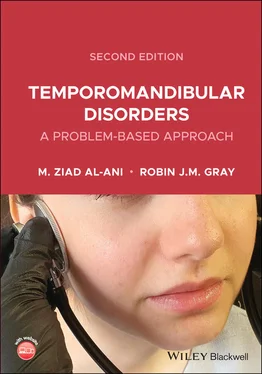
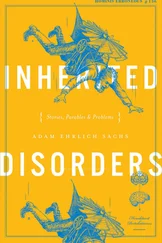


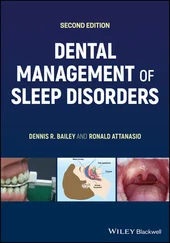
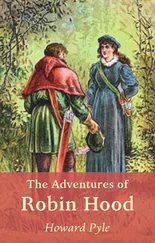



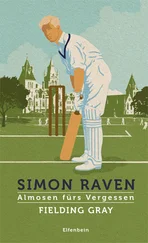

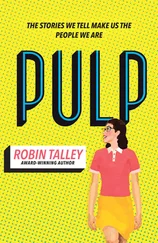
![John Bruce - The Lettsomian Lectures on Diseases and Disorders of the Heart and Arteries in Middle and Advanced Life [1900-1901]](/books/749387/john-bruce-the-lettsomian-lectures-on-diseases-and-disorders-of-the-heart-and-arteries-in-middle-and-advanced-life-1900-1901-thumb.webp)